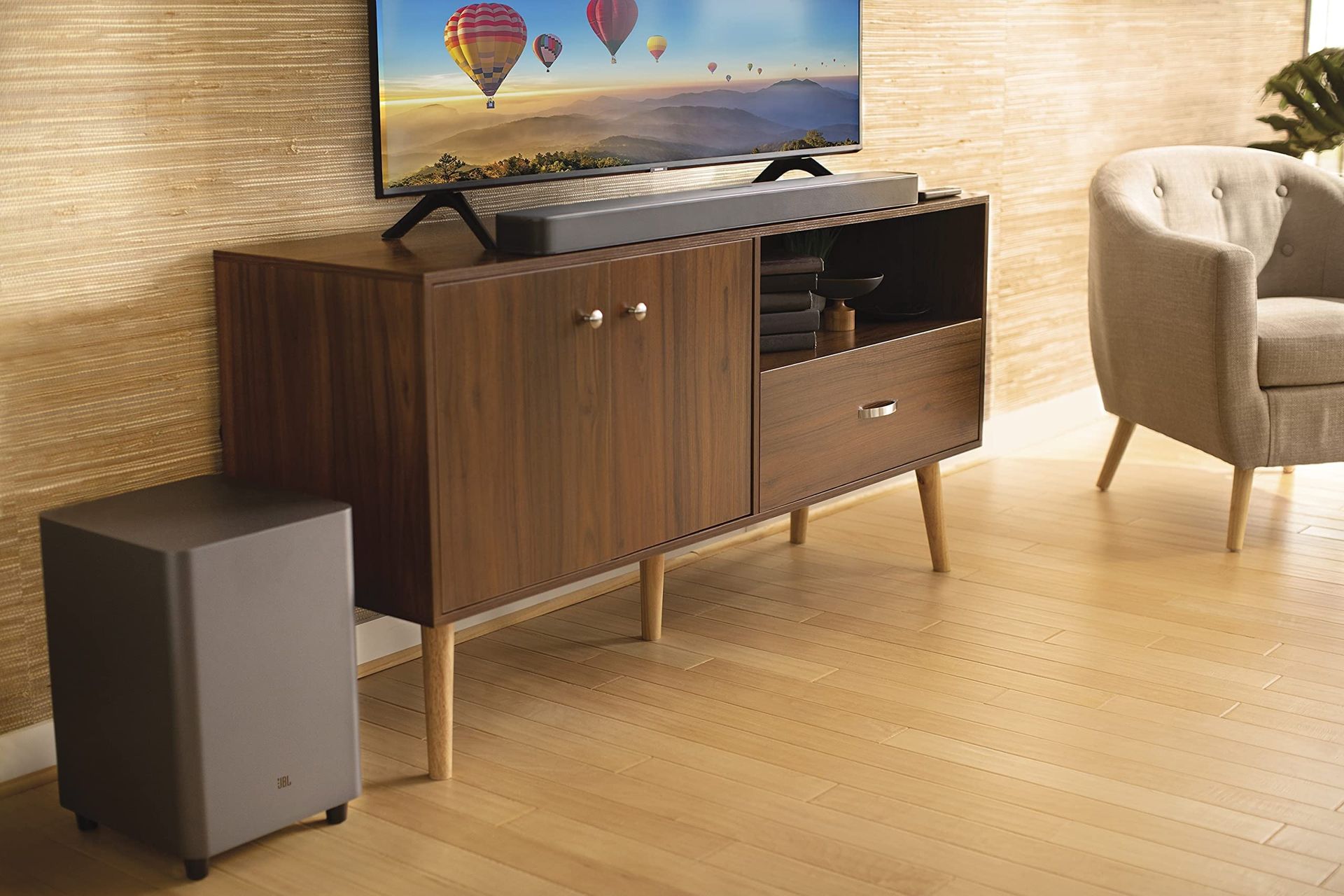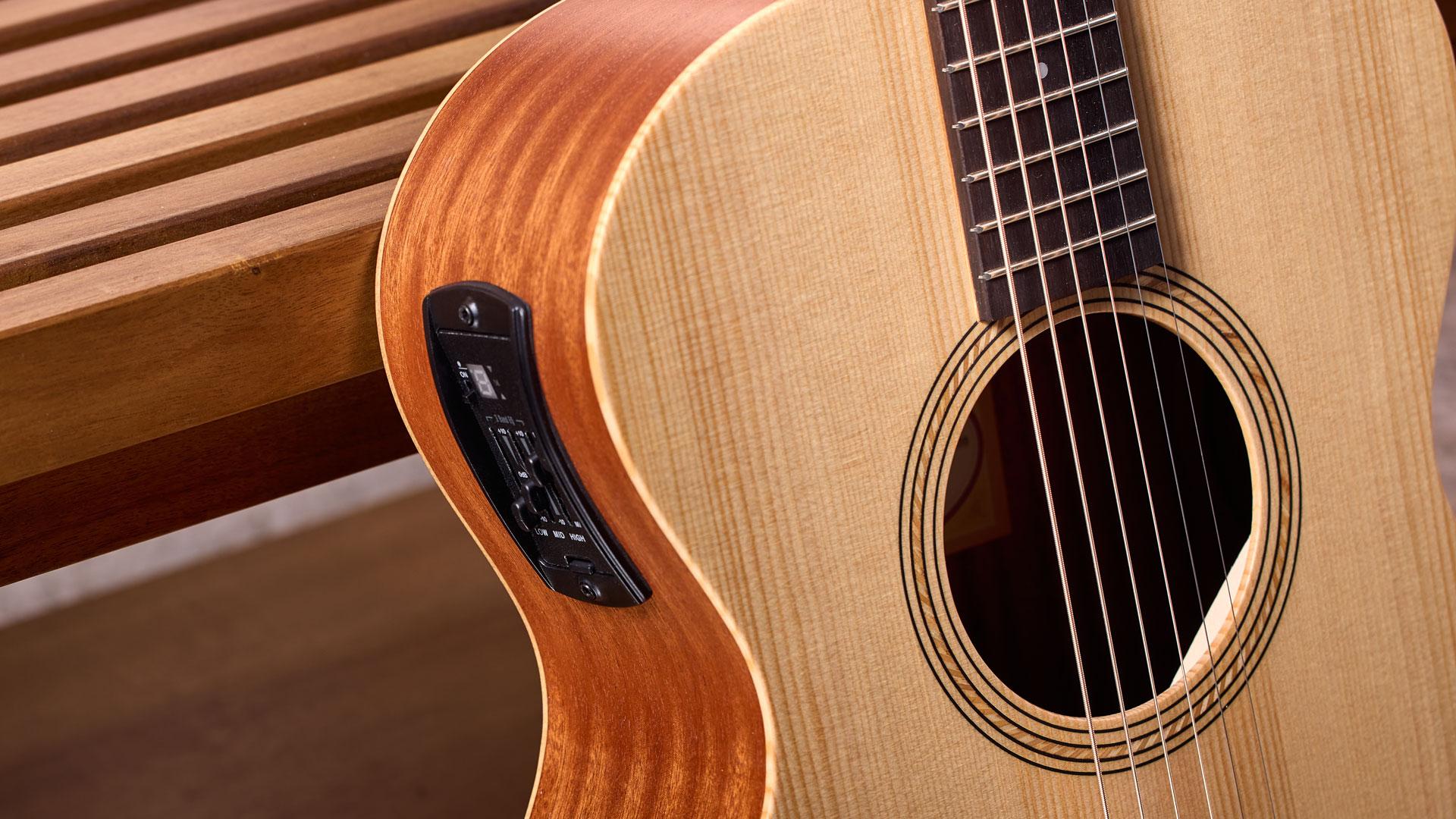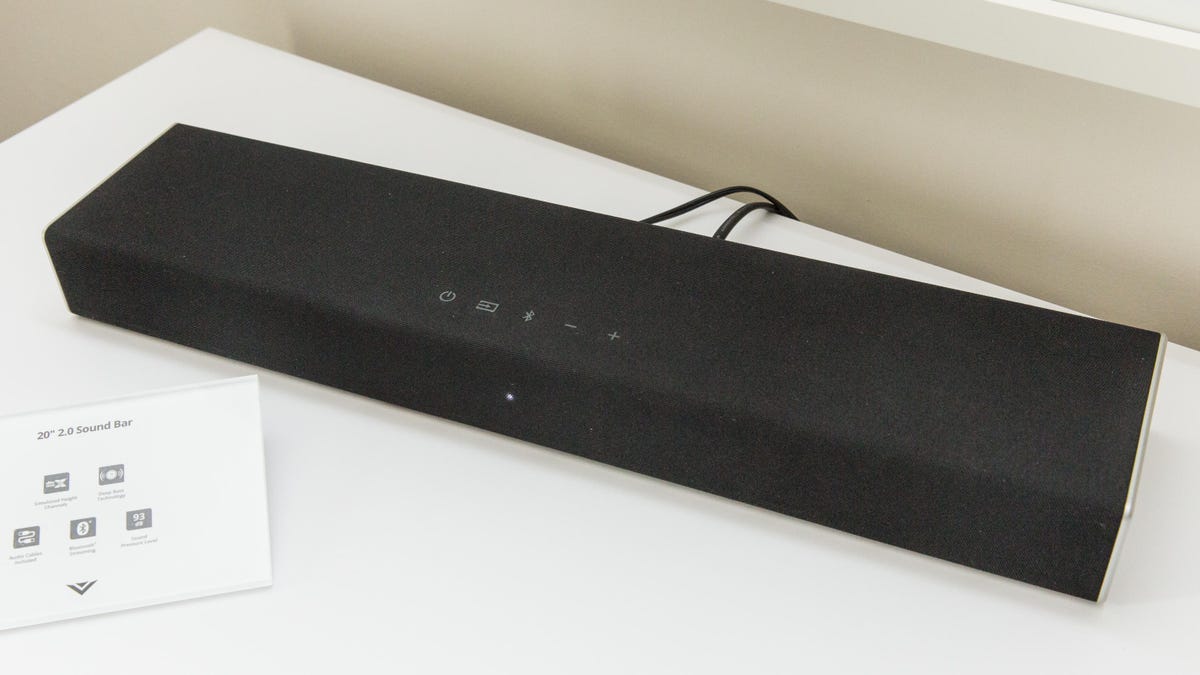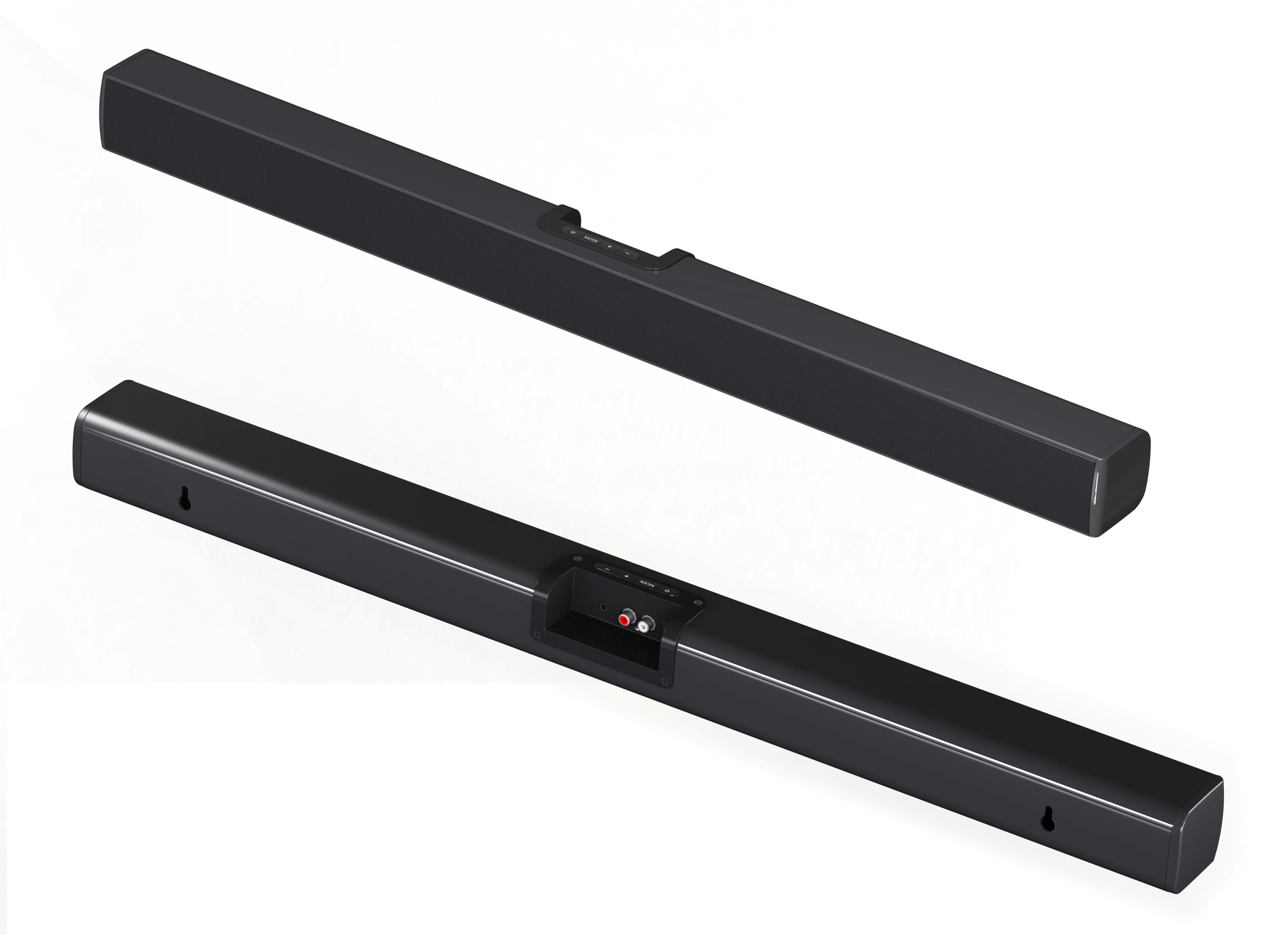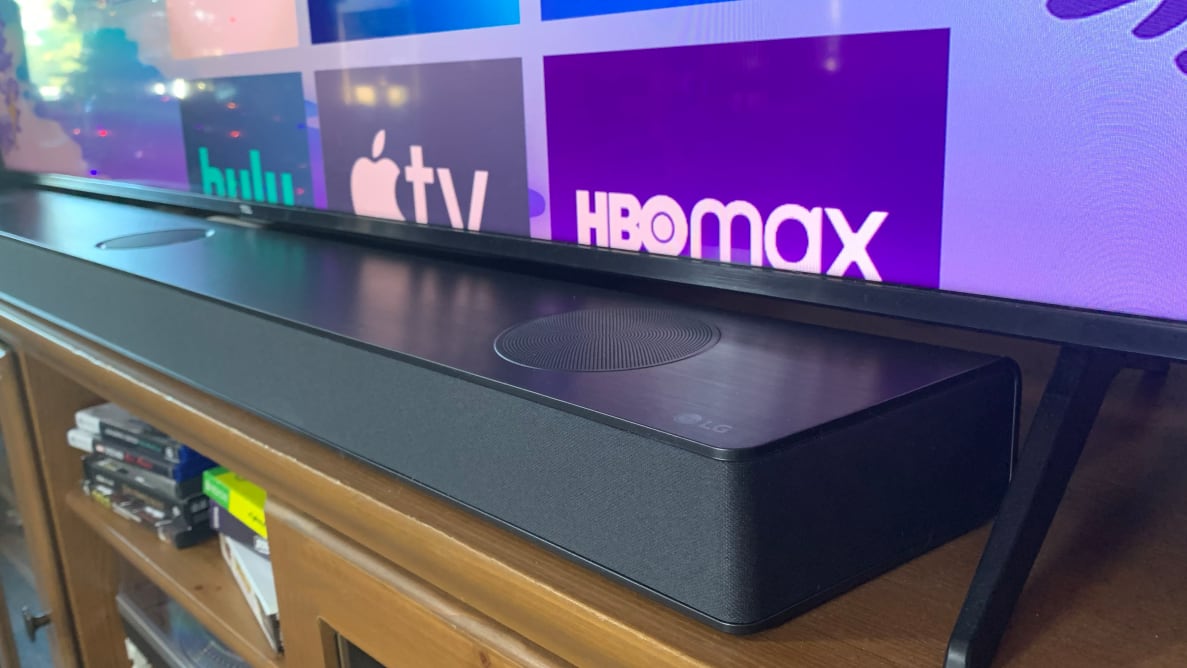Home>Production & Technology>Sound Bar>Why Do I Need Pass Through On A Sound Bar
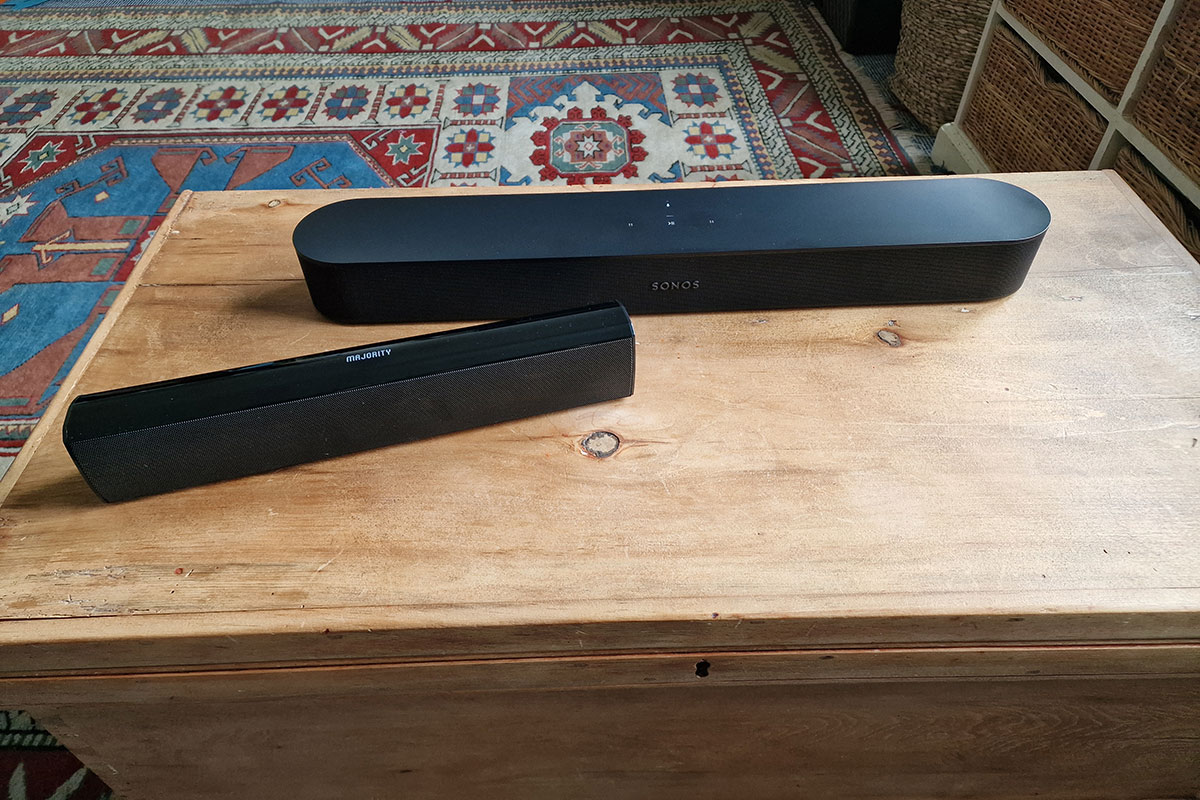

Sound Bar
Why Do I Need Pass Through On A Sound Bar
Modified: January 22, 2024
Discover the importance of pass-through on a sound bar and how it enhances your audio experience. Explore why a sound bar with pass-through is essential for optimizing sound quality.
(Many of the links in this article redirect to a specific reviewed product. Your purchase of these products through affiliate links helps to generate commission for AudioLover.com, at no extra cost. Learn more)
Table of Contents
Introduction
Sound bars have become a popular audio solution for home entertainment setups, providing a sleek and convenient way to enhance the audio quality of your TV or media center. But what exactly is “pass through” on a sound bar and why do you need it? In this article, we will explore the concept of pass through and its benefits, as well as how it works and the different types available.
Pass through refers to the ability of a sound bar to transmit audio signals from connected devices to the TV or display without any alteration or processing. In other words, it allows the sound bar to act as a conduit or bridge, passing the audio signal directly to the TV while maintaining its original quality.
So why is pass through important for a sound bar? Well, there are several reasons why you should consider a sound bar with pass through capability. Firstly, it allows for enhanced audio quality, ensuring that the original sound signal reaches your TV without any degradation or loss of fidelity.
Additionally, pass through enables you to connect multiple devices to your sound bar simultaneously. Whether it’s a gaming console, Blu-ray player, or streaming device, pass through allows you to enjoy the audio from all these sources without the need for complex setup or switching between devices. This is especially useful if your TV has limited HDMI ports or if you prefer to have a clutter-free setup.
Furthermore, pass through provides a seamless audio experience by allowing your sound bar to pass through advanced audio formats such as Dolby Atmos or DTS:X directly to your TV. This ensures that you can enjoy immersive audio from your favorite movies and shows, as these formats are often not compatible with older TVs or audio systems.
Lastly, pass through ensures compatibility with various audio setups. Whether you have a TV with ARC (Audio Return Channel) or optical audio output, a sound bar with pass through can accommodate different connection options, making it versatile and compatible with a wide range of setups.
Now that we understand the importance of pass through on a sound bar, let’s delve into how it works and explore the different types of pass through available.
What is Pass Through on a Sound Bar?
Pass through on a sound bar refers to the ability of the device to transmit audio signals from connected devices directly to the TV or display without any alteration or processing. It acts as a bridge, allowing the sound bar to pass the audio signal through to the TV while maintaining its original quality.
Unlike some other audio devices that may process or modify the audio signal before transmitting it, a sound bar with pass through capability ensures that the audio signal remains untouched. This means that the sound bar does not alter the audio in any way, allowing it to maintain its fidelity and integrity.
This is particularly important when it comes to surround sound formats such as Dolby Atmos or DTS:X. These advanced audio formats require specific decoding and processing to deliver an immersive audio experience. With pass through, the sound bar can transmit the audio signal to the TV without modifying these formats, allowing the TV or external audio receiver to handle the decoding and processing for optimal performance.
In addition to preserving the original audio quality, pass through on a sound bar also enables seamless connectivity with multiple devices. With pass through, you can connect multiple audio sources such as gaming consoles, Blu-ray players, or streaming devices to your sound bar simultaneously. The sound bar acts as a central hub, ensuring that the audio from all connected devices is passed through to the TV without the need for manual switching or complex setup.
Pass through is especially useful if your TV has limited HDMI ports, as it allows you to connect all your devices to the sound bar instead. This simplifies the setup and eliminates the need to constantly swap HDMI cables. It also provides a clutter-free look with only one cable connected to the TV.
Furthermore, pass through on a sound bar ensures compatibility with various audio setups. Whether your TV has an ARC (Audio Return Channel) HDMI port or an optical audio output, a sound bar with pass through capability can accommodate different connection options. This versatility makes it easier to integrate the sound bar into your existing audio setup without compatibility issues.
In summary, pass through on a sound bar allows for the direct transmission of audio signals from connected devices to the TV without any alteration or processing. It preserves the original audio quality, enhances connectivity with multiple devices, and ensures compatibility with different audio setups. Pass through is an essential feature to consider when choosing a sound bar for your home entertainment system.
Benefits of Pass Through on a Sound Bar
Pass through capability on a sound bar offers several benefits that enhance your audio experience and make your home entertainment setup more convenient. Let’s take a closer look at the advantages of having pass through on your sound bar:
- Enhanced Audio Quality: Pass through ensures that the original audio signal is transmitted to your TV without any processing or alteration. This means that you’ll enjoy the best possible audio quality, with no loss of fidelity or distortion. Whether you’re watching a movie, gaming, or listening to music, pass through allows you to experience the audio as intended by the content creators.
- Multiple Device Connectivity: With pass through, you can connect multiple devices to your sound bar simultaneously. Whether it’s a gaming console, Blu-ray player, or streaming device, pass through allows you to enjoy the audio from all these sources without the need for complex setup or switching between devices. This is especially useful if your TV has limited HDMI ports or if you prefer to have a clutter-free setup.
- Seamless Audio Experience: Pass through enables your sound bar to deliver advanced audio formats, such as Dolby Atmos or DTS:X, directly to your TV. These formats provide immersive and multidimensional sound experiences. With pass through, the sound bar can transmit these formats without modification, allowing your TV or external audio receiver to handle the decoding and processing. This ensures that you can enjoy a seamless audio experience with rich and detailed sound.
- Compatibility with Various Setups: Pass through ensures compatibility with different audio setups. Whether your TV has an ARC (Audio Return Channel) HDMI port or an optical audio output, a sound bar with pass through capability can accommodate these connection options. This versatility makes it easier to integrate the sound bar into your existing audio setup without compatibility issues.
Overall, pass through on a sound bar provides enhanced audio quality, allows for multiple device connectivity, delivers a seamless audio experience, and ensures compatibility with different audio setups. These benefits make pass through a valuable feature to consider when choosing a sound bar for your home entertainment system.
Enhanced Audio Quality
One of the key benefits of pass through capability on a sound bar is the enhanced audio quality it provides. When you connect your audio sources, such as gaming consoles, Blu-ray players, or streaming devices, to a sound bar with pass through, it ensures that the audio signal is transmitted directly to your TV or display without any processing or alteration.
This means that the original audio signal, as intended by the content creators, is preserved and delivered to your ears without any loss of fidelity or distortion. Every detail, from the subtle nuances to the powerful dynamics, is faithfully reproduced, allowing you to fully immerse yourself in the audio experience.
Without pass through, some sound bars may process the audio signal internally before transmitting it. While this may be necessary for certain audio enhancements or effects, it can sometimes result in a loss of audio quality. Pass through eliminates this issue by allowing the sound bar to act as a conduit, passing the audio signal directly to the TV untouched.
Pass through is especially beneficial when it comes to advanced audio formats such as Dolby Atmos or DTS:X. These formats provide immersive and multidimensional sound experiences, with audio objects moving dynamically around the room, creating a lifelike audio environment. To fully appreciate the immersive nature of these formats, it is crucial to deliver the audio signal without any alterations. With pass through, the sound bar can transmit these formats directly to your TV, allowing your TV or external audio receiver to handle the decoding and processing, resulting in optimal audio performance.
Furthermore, pass through ensures that the audio quality remains consistent across different sources. Whether you’re playing a video game, watching a movie, or streaming music, the audio signal is maintained in its original form, providing a consistent and high-quality audio experience across all your devices.
In summary, pass through on a sound bar ensures enhanced audio quality by preserving the original audio signal and delivering it to your TV or display without any processing or alteration. This allows you to enjoy the audio as intended by the content creators, with no loss of fidelity or distortion. Whether you’re listening to music, watching movies, or playing games, pass through enhances your audio experience and brings the sound to life.
Multiple Device Connectivity
Pass through capability on a sound bar allows for seamless connectivity with multiple devices, making it a convenient and versatile audio solution for your home entertainment setup. With pass through, you can connect various audio sources, such as gaming consoles, Blu-ray players, streaming devices, and more, to your sound bar simultaneously.
This means that you don’t have to constantly switch cables or manually change connections whenever you want to use a different device. With all your devices connected to the sound bar, you can easily select the desired input using the sound bar’s remote control or through an app on your smartphone.
Having multiple device connectivity is especially useful if your TV has limited HDMI ports. Instead of trying to juggle HDMI cables and constantly swap them between devices, you can simply connect all your devices to the sound bar. All the audio signals from these devices will be passed through the sound bar to the TV, eliminating the need for multiple HDMI connections on the TV itself.
By utilizing the pass through feature, you can enjoy the audio from different sources without any hassle. Whether you’re playing a video game on your console, watching a movie on your Blu-ray player, or streaming the latest TV show on your streaming device, the sound bar will ensure that the audio is transmitted to your TV in its original quality.
In addition, having multiple device connectivity with pass through streamlines your setup and eliminates cable clutter. Instead of having multiple cables connecting directly to your TV, you only need one HDMI cable from the sound bar to the TV. This creates a cleaner and more organized entertainment center.
Furthermore, pass through capability allows you to control the audio settings and adjust the volume for all your connected devices through the sound bar itself. You can easily switch between devices and make adjustments without having to reach for different remote controls or access different menus.
Overall, multiple device connectivity through pass through on a sound bar simplifies your home entertainment setup, eliminates the need for multiple HDMI connections on your TV, and provides a clutter-free environment. It offers convenience, flexibility, and ease of use, allowing you to enjoy the audio from all your devices without any complications or cable management issues.
Seamless Audio Experience
Pass through capability on a sound bar enables a seamless audio experience by allowing advanced audio formats and effects to be transmitted directly to your TV or display. It ensures that the sound bar acts as a conduit, passing the audio signal through without modification, so that your TV or external audio receiver can handle the decoding and processing for optimal performance.
One of the key benefits of pass through is its compatibility with advanced audio formats such as Dolby Atmos or DTS:X. These formats create a three-dimensional sound experience, with audio objects moving dynamically around the room, immersing you in a lifelike audio environment. With pass through, the sound bar can transmit these formats directly to your TV, maintaining the integrity of the audio signal and allowing your TV or audio receiver to deliver an immersive and enveloping audio experience.
Pass through also ensures compatibility with other audio effects and enhancements that may be present in the original audio source. Whether it’s a movie with surround sound effects, a music album with audio processing, or a gaming experience with spatial audio, pass through retains these features and delivers them seamlessly to your TV or display.
In addition to advanced audio formats and effects, pass through allows for the transmission of high quality audio codecs and resolutions. Whether you’re streaming high-resolution audio from a service, playing lossless music files, or watching a Blu-ray with uncompressed audio tracks, pass through ensures that the audio quality is preserved and transmitted to your TV without any degradation or loss of fidelity.
Furthermore, pass through enhances the synchronization between audio and video. With the audio signal passing directly to your TV or display, there is minimal delay or latency, resulting in a seamless synchronization of sound and visuals. This is especially important for a smooth and immersive viewing experience, whether you’re watching movies, playing games, or enjoying other multimedia content.
By delivering audio without modification or processing, pass through ensures a consistent and unified audio experience across different content types and sources. This means that the audio quality and characteristics remain consistent whether you’re watching a movie, playing a game, or streaming music.
In summary, pass through capability on a sound bar provides a seamless audio experience by allowing advanced audio formats, effects, and high-quality codecs to be transmitted directly to your TV or display. It ensures compatibility with various audio enhancements, maintains synchronization between audio and video, and delivers a consistent and unified audio experience across different content types and sources.
Compatibility with Various Setups
Pass through capability on a sound bar ensures compatibility with various audio setups, making it a versatile choice for your home entertainment system. Whether you have a TV with ARC (Audio Return Channel) HDMI ports or an optical audio output, a sound bar with pass through capability can accommodate different connection options.
If your TV has ARC HDMI ports, pass through allows the sound bar to receive audio signals from the TV, eliminating the need for a separate audio cable. This simplifies the setup and reduces cable clutter, as the sound bar can utilize the HDMI connection between the TV and the sound bar to transmit the audio signals back to the sound bar for amplification and playback.
For TVs without ARC HDMI ports, an optical audio output is commonly available. With pass through, the sound bar can connect to the TV through the optical audio output, ensuring compatibility and seamless integration into your audio setup. Pass through allows the sound bar to pass the audio signal through to the TV without any alterations or processing, delivering high-quality audio to your TV speakers or external audio receiver.
Furthermore, pass through ensures compatibility with other devices and sources that may have different audio output options. Whether you’re connecting a gaming console, Blu-ray player, streaming device, or other audio sources, the pass through capability of the sound bar allows it to accommodate different types of audio connections, such as HDMI or optical.
Pass through also ensures compatibility with different audio formats and resolutions. Whether you’re playing stereo audio, multi-channel surround sound, or high-resolution audio, the sound bar with pass through capability can transmit the audio signals without any loss of quality, ensuring your audio setup is versatile and future-proof.
Additionally, pass through allows for compatibility with external audio receivers or amplifiers. If you have a more complex audio setup and prefer to use an external receiver or amplifier for audio processing and amplification, the pass through capability enables the sound bar to act as a central hub for audio distribution, passing the audio signal along to your external audio devices while still benefiting from the sound bar’s convenience and features.
In summary, pass through capability on a sound bar ensures compatibility with various audio setups, including TVs with ARC HDMI ports, optical audio outputs, different audio connection options, and external audio devices. It provides flexibility and versatility, allowing you to integrate the sound bar seamlessly into your existing audio system and enjoy high-quality audio from different sources.
How Does Pass Through Work?
Pass through functionality on a sound bar works by allowing the audio signal from connected devices to pass directly through the sound bar without any alteration or processing. It acts as a conduit, transmitting the audio signal to the TV or display in its original form.
When you connect your devices, such as gaming consoles, Blu-ray players, or streaming devices, to the sound bar, the audio signals from these devices are received by the sound bar. Instead of processing or modifying the audio, the sound bar simply passes the signals through to the TV or display.
The pass through process relies on the input and output connections available on the sound bar. Typically, sound bars offer multiple input options such as HDMI, optical, or analog. You can connect your devices to these inputs using the appropriate cables.
Once the audio signals are received by the sound bar, it can pass them through to the TV or display using the available output connection, which is usually HDMI or optical. The output connection is connected to the corresponding input on your TV or display, ensuring that the audio signals are transmitted directly without any alteration.
When the audio signals are passed through to the TV, the TV’s internal speakers or an external audio receiver connected to the TV can handle the audio decoding and processing. This allows for the optimal playback of advanced audio formats, such as Dolby Atmos or DTS:X, as well as other audio effects or enhancements present in the original audio source.
Pass through technology ensures that the sound bar does not introduce any delays or alterations to the audio signals, resulting in synchronized sound and video playback. This is particularly important for a seamless audio experience in movies, TV shows, and video games.
Pass through also simplifies the connection and setup process, especially in setups with limited HDMI ports on the TV. Instead of connecting all devices directly to the TV, which can be cumbersome and may require frequent cable switching, the sound bar serves as a central hub that allows for multiple device connectivity and convenient switching between audio sources.
In summary, pass through on a sound bar works by allowing the audio signals from connected devices to pass directly through the sound bar to the TV or display without any modification. It relies on the input and output connections available on the sound bar, ensuring that the audio signals are transmitted seamlessly and synchronized with the video playback.
Types of Pass Through
Pass through capability on a sound bar can come in different types, depending on the available input and output connections. Let’s explore the two most common types of pass through:
- HDMI Pass Through: HDMI pass through is the most widely used type of pass through on a sound bar. With HDMI pass through, the sound bar receives the audio signals from connected devices through HDMI inputs and passes them through to the TV or display via its HDMI output. This allows for high-quality audio transmission, including support for advanced audio formats such as Dolby Atmos or DTS:X. HDMI pass through also simplifies the setup process, as it can transmit both audio and video signals through a single HDMI cable, reducing cable clutter and providing a seamless connection between devices.
- Optical Pass Through: Optical pass through, also known as Toslink pass through, is another common type of pass through on a sound bar. With optical pass through, the sound bar receives the audio signals from connected devices through its optical input and passes them through to the TV or display via its optical output. While optical pass through may not support advanced audio formats like HDMI pass through, it can still deliver high-quality audio and is compatible with various devices that have optical audio output, such as gaming consoles, Blu-ray players, and set-top boxes. Optical pass through is a popular choice for TVs or devices that do not have ARC-enabled HDMI ports.
It’s important to note that the type of pass through your sound bar offers will depend on its specific features and connectivity options. Some sound bars may offer both HDMI and optical pass through, while others may only provide one or the other. It’s recommended to check the sound bar’s specifications or consult the manufacturer’s documentation to determine the available pass through options.
Ultimately, the choice of pass through type depends on your device’s connectivity options, the audio formats you want to support, and your personal preferences. It’s essential to ensure compatibility between your sound bar, connected devices, and TV or display to achieve the best audio experience.
In summary, there are two common types of pass through on a sound bar: HDMI pass through and optical pass through. HDMI pass through provides high-quality audio transmission and supports advanced audio formats, while optical pass through offers compatibility with devices that have optical audio output. The type of pass through depends on the sound bar’s connectivity options and your specific requirements.
HDMI Pass Through
HDMI pass through is a popular type of pass through on a sound bar that allows for seamless audio transmission from connected devices to the TV or display. With HDMI pass through, the sound bar receives the audio signals from devices through its HDMI inputs and passes them through to the TV or display via its HDMI output, without any alteration or processing.
One of the key advantages of HDMI pass through is its ability to support high-quality audio formats and codecs. It allows for the transmission of advanced audio formats, such as Dolby Atmos or DTS:X, which provide immersive and lifelike sound experiences. HDMI pass through ensures that the audio signals are delivered to the TV or display in their original quality, allowing for optimal audio performance and compatibility with various media sources.
Furthermore, HDMI pass through simplifies the connection and setup process. Instead of connecting each device directly to the TV, which may result in cable clutter and the need for frequent cable switching, the sound bar acts as a central hub. You can connect all your devices to the sound bar’s HDMI inputs, and then connect the sound bar to the TV using a single HDMI cable. This reduces cable mess and makes it easier to switch between devices without changing the physical connections.
HDMI pass through also supports the transmission of both audio and video signals through a single HDMI cable. This eliminates the need for separate audio cables, such as optical, to transmit the audio signal. With HDMI pass through, you can enjoy synchronized audio and video playback, ensuring a seamless and immersive entertainment experience.
Another benefit of HDMI pass through is its compatibility with HDMI-CEC (Consumer Electronics Control). HDMI-CEC allows for control of multiple HDMI-connected devices with a single remote control. With HDMI pass through, you can control the connected devices, such as adjusting the volume or changing inputs, using the sound bar’s remote control or through the HDMI-CEC-enabled TV remote. This adds convenience and simplifies the overall user experience.
It’s worth noting that for devices that support HDMI ARC (Audio Return Channel), HDMI pass through also enables the sound bar to receive audio signals from the TV, allowing for a two-way audio connection. This allows the sound bar to play audio from the TV’s internal apps or over-the-air broadcasts, further expanding the audio capabilities of your setup.
In summary, HDMI pass through on a sound bar provides seamless audio transmission from connected devices to the TV or display. It supports high-quality audio formats, simplifies connectivity and setup, enables synchronized audio and video playback, and may offer compatibility with HDMI-CEC and HDMI ARC functionalities. HDMI pass through is a versatile and convenient option for enhancing your home entertainment system.
Optical Pass Through
Optical pass through, also known as Toslink pass through, is a common type of pass through found on sound bars. With optical pass through, the sound bar receives the audio signals from connected devices through its optical input and passes them through to the TV or display using its optical output, without any modification or processing.
One of the advantages of optical pass through is its compatibility with various devices that have optical audio output. This includes gaming consoles, Blu-ray players, set-top boxes, and other audio sources. By utilizing the optical pass through feature, you can easily connect these devices to the sound bar and enjoy high-quality audio transmission to your TV or display.
Although optical pass through may not support advanced audio formats like HDMI pass through, it still delivers high-quality audio. The optical cable used in this type of pass through is capable of transmitting digital audio signals without any loss of quality or degradation, resulting in pristine audio playback.
Optical pass through is particularly useful for setups where the TV or other devices do not have ARC (Audio Return Channel)-enabled HDMI ports. In such cases, the optical audio output is a common and reliable option for transmitting audio signals to the sound bar. The sound bar can seamlessly receive the audio signals from the connected devices and pass them through to the TV or display.
Another benefit of optical pass through is its simplicity and ease of use. The optical cable is widely available and easy to connect, and it can deliver reliable audio transmission without the need for multiple cables or complex setup procedures.
It’s important to note that optical pass through may not support certain advanced audio formats such as Dolby Atmos or DTS:X. However, it can still deliver high-quality audio for most standard audio formats and provide an excellent audio experience for your home entertainment setup.
Additionally, some sound bars may offer both HDMI and optical pass through options, providing flexibility and compatibility with various devices and setups. This allows you to choose the pass through method that best suits your specific requirements and available connections.
In summary, optical pass through on a sound bar is a reliable and widely compatible method for transmitting audio signals from connected devices to the TV or display. It offers high-quality audio transmission, simplicity, and ease of use. While it may not support advanced audio formats, optical pass through is a popular choice for setups without ARC-enabled HDMI ports and provides an excellent audio experience for most standard audio formats.
Conclusion
Pass through capability on a sound bar is a valuable feature that enhances your audio experience and provides convenience in your home entertainment setup. Whether you choose a sound bar with HDMI pass through or optical pass through, both types offer benefits that cater to different needs and preferences.
Pass through ensures enhanced audio quality, allowing the sound bar to transmit the audio signal to your TV or display without any alteration or processing. This ensures that you can enjoy the original audio as intended by the content creators, with no loss of fidelity or distortion.
Multiple device connectivity is another advantage of pass through. With the ability to connect multiple devices to the sound bar simultaneously, you can enjoy the audio from all your sources without complex setup or cable switching. Pass through simplifies your home entertainment system by acting as a central hub for your audio devices, reducing cable clutter and providing a seamless experience.
Pass through also enables a seamless audio experience by allowing advanced audio formats, effects, and high-quality codecs to be transmitted directly to your TV or display. This ensures compatibility with various audio setups and provides a consistent and unified audio experience across different content types and sources.
Whether you opt for HDMI pass through or optical pass through, both types offer compatibility with different setups and devices. HDMI pass through supports high-quality audio formats and simplifies connectivity, while optical pass through provides compatibility with devices that have optical audio output and ensures reliable audio transmission.
In conclusion, pass through on a sound bar is a crucial feature to consider when choosing an audio solution for your home entertainment system. It enhances audio quality, supports multiple device connectivity, delivers a seamless audio experience, and ensures compatibility with various setups. By choosing a sound bar with pass through capability, you can take your audio experience to the next level and enjoy immersive sound in the comfort of your own home.


